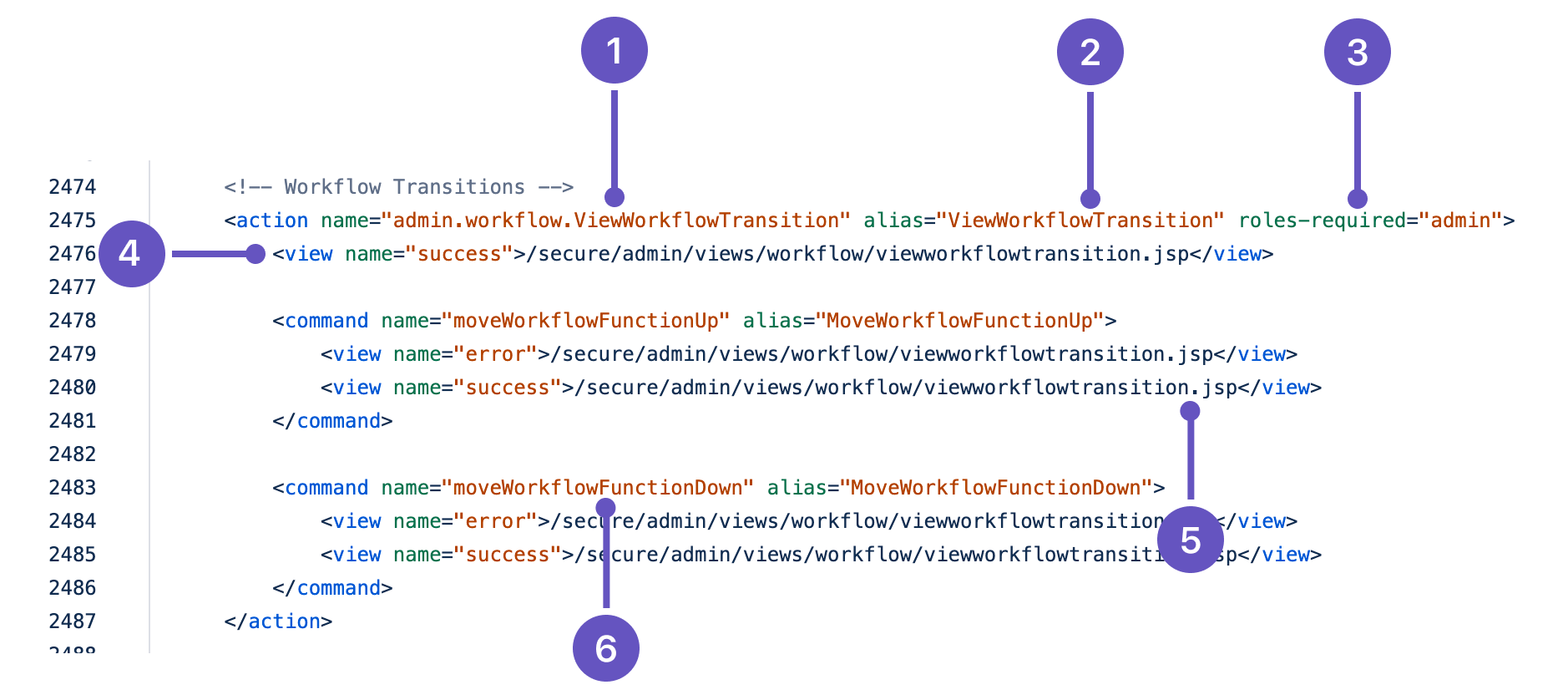Jira Developer Documentation : JIRA Webwork Actions
Webwork Actions and actions.xml
A web application framework defines what happens when you visit a particular URL in a web application. For example, the URL for a simple static page with no dynamic content could end in ".html". A ".jspa" suffix indicates that the URL is referring to a page whose content was created using Java Server Pages (JSP). JSP files are templates that can contain both HTML and commands to create HTML. The commands refer to a Java object and the object's methods are called just as in an ordinary Java program. The mapping of the URL to a Java class in Jira is done using the Webwork 1.x web application framework. However, this framework has been superseded by Webwork 2, which is used by Confluence, Bamboo, and Crowd.
The mappings between a URL and classes are declared in the actions.xml file (src/webapp/WEB-INF/classes/actions.xml). A typical element of this file looks like this:

- Partial package name and Action class.
- Action name used in the URL:
ViewWorkflowTransition.jspa. - Important: all actions that don't require admin role should either manage their own security or be available to all users.
view nameis a string returned from action to decide which view to show after action is invoked.- View template. In Jira, we use JSP files.
- You can specify an optional command. The name is used in URL as a
!commandNamesuffix and implemented in the Action class as adoCommandName()method.
Each action element has an alias attribute, which is the part of the URL that you see in a web browser. The name element is the name of the Java class that is used by the alias.
Command elements are optional, and are used when several interactions belong to the same Action. A command name is specified on the URL like this:
1 2SomeAction!myCommand.jspa
The command is implemented in a method in the Action class with the corresponding name:
1 2public String doMyCommand() { // implement the command logic here return "someview"; }
The doExecute method is run when no command is requested i.e. the bare /path/to/MyAction.jspa.
Security
When adding an action to the actions.xml You must ensure the appropriate roles-required value is specified. This will ensure only users in the authorised role can execute the action. For actions that can be handled by application level security, such as those actions that can be given to project administrators identified through the course of administering JIRA, no role may be required, likewise setup actions and others that manage their own permissions. For some actions, the use role must be present. This ensures the user is logged in and identified.
The admin role is required for all administration actions so you must be sure when adding an action that your new action has roles-required="admin" or confident that it doesn't need it. The sysadmin role requires the user be a system administrator, and the use role requires that they just be logged in. (Other definitions can be found in Permissions.java in the source).
Actions don't care about the path of the URI, just the ActionName.jspa and optionally the !commandName suffix.
Webwork Plugins
Jira can have new actions defined using the Webwork plugin module. These actions can also override existing actions in Jira. However, jsp files cannot currently be bundled in the plugin jar file and have to be installed in a separate step when deploying such a plugin.
Rate this page: